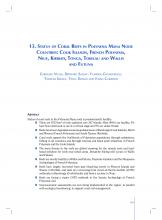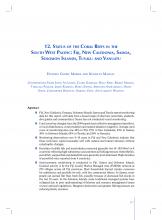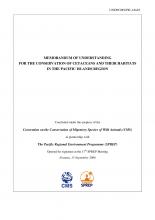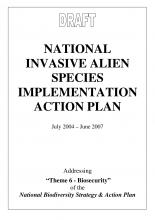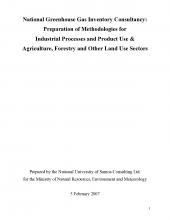Status of the coral reefs in the South west Pacific: Fiji, New Caledonia, Samoa, Solomon Islands, Tuvalu and Vanuatu

Island and Ocean Ecosystems
Available Online
Mackay Kenneth
,
Morris Cherie
2008
Fiji, New Caledonia, Vanuatu, Solomon Islands, Samoa and Tuvalu report monitoring data for this report, with data from a broad range of observers (scientists, students, dive guides and communities); Nauru has not conducted recent monitoring; Coral cover has changed since the 2004 report due to effective management (positive), or local disturbances, coral predation and natural disasters (negative). Average coral cover at monitoring sites was 45% in Fiji; 27% in New Caledonia; 43% in Samoa; 30% in Solomon Islands; 65% in Tuvalu; and 26% in Vanuatu; Monitoring observations over 9-10 years in Fiji and New Caledonia indicate that these reefs have coped reasonably well with natural and human stressors without catastrophic changes; Densities of edible fish and invertebrates remained generally low (0-10/100m2) in 4 countries reflecting high subsistence and commercial fishing pressure. Butterflyfish, parrotfish, surgeonfish and damselfish were generally most dominant. High densities of parrotfish were reported from 4 countries; Socioeconomic monitoring is conducted in Fiji, Samoa and Solomon Islands. Greatest activity is by the Fiji Locally Marine Managed Area (FLMMA) network at 270 villages across all Fiji provinces. Most households harvest marine resources for subsistence and partially for sale, with few commercial fishers. In Samoa, more people eat canned fish than fresh fish, possibly because of decreased fish stocks in the last 10 years. In the Solomon Islands, some traditional managed systems have collapsed due to poor understanding of fisheries and resource management issues or poor national regulations. Mangrove destruction and greater fishing pressure are reducing family incomes;

